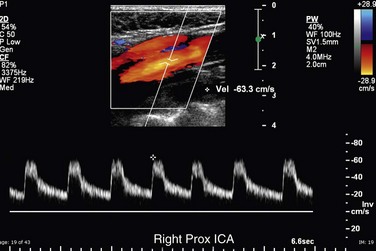

Eat a heart-healthy diet such as the Mediterranean diet.Eat a healthy diet, including fruits, vegetables, and whole-grain breads and cereals, and limit saturated fat.If the test shows that you're at risk of a stroke, your health care provider may recommend the following therapies depending on the severity of the blockage in your arteries: The health care provider who ordered the test will explain to you what the carotid ultrasound revealed and what that means for you. The radiologist also may discuss the results of the test with you immediately after the procedure. This may be your health care provider, a doctor trained in heart and blood vessel conditions, called a cardiologist, or a doctor trained in brain and nervous system conditions, called a neurologist. ResultsĪ doctor who specializes in imaging tests, called a radiologist, will review your test results, then prepare a report for the health care provider who ordered the test. If you do, tell the ultrasound technician. You shouldn't feel any discomfort during the procedure. The technician then gently presses the transducer against the side of your neck. The gel helps transmit the ultrasound waves back and forth.
#NORMAL CAROTID DOPPLER PEAK SYSTOLIC VELOCITY SKIN#
The ultrasound technician will apply a warm gel to your skin above the site of each carotid artery. The ultrasound technician may position your head to better access the side of your neck. You'll likely lie on your back during the ultrasound. There have been vast technological advances in carotid ultrasounds, improving the quality and resolution of the images.Ī carotid ultrasound usually takes about 30 minutes. In a Doppler ultrasound, the rate of blood flow is translated into a graph. The ultrasound technician may use a Doppler ultrasound, which shows blood flowing through the arteries. The transducer emits sound waves and records the echo as the waves bounce off tissues, organs and blood cells.Ī computer translates the echoed sound waves into a live-action image on a monitor. What you can expect How it worksĪ technician called a sonographer conducts the test with a small, hand-held device called a transducer. Unless your health care provider or the radiology lab provides special instructions, you shouldn't need to make any other preparations.

Early diagnosis and treatment of a narrowed carotid artery can decrease stroke risk. It can occur in the carotid artery of the neck as well as other arteries.Ī carotid ultrasound is done to look for for narrowed carotid arteries, which increase the risk of stroke.Ĭarotid arteries are usually narrowed by a buildup of plaque - made up of fat, cholesterol, calcium and other substances that circulate in the bloodstream. A blood clot often forms in arteries damaged by a buildup of plaques, known as atherosclerosis. An ischemic stroke occurs when a blood clot, known as a thrombus, blocks or plugs an artery leading to the brain.


 0 kommentar(er)
0 kommentar(er)
